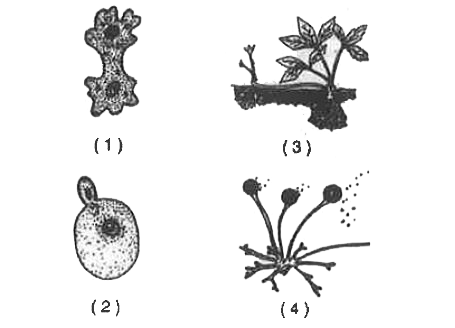Represent Haber's process by a flowchart.
Step-by-Step Solution for Representing Haber's Process by a Flowchart
1. Identify the Reactants:
- The reactants in Haber's process are Nitrogen (N₂) and Hydrogen (H₂).
- Flowchart Representation: Start with two boxes labeled "Nitrogen (N₂)" and "Hydrogen (H₂)".
2. Determine the Ratio:
- The ratio of Nitrogen to Hydrogen is 1:3.
- Flowchart Representation: Draw an arrow from the Nitrogen box to the Hydrogen box, indicating the ratio (1:3).
3. Reaction Chamber:
- The reactants are passed through a reaction chamber.
- Flowchart Representation: Create a box labeled "Reaction Chamber" and connect it with arrows from both the Nitrogen and Hydrogen boxes.
4. Conditions in the Chamber:
- The reaction occurs at a temperature of 400-450 °C and a pressure of 200 atm.
- Flowchart Representation: Inside the "Reaction Chamber" box, note the conditions: "Temperature: 400-450 °C, Pressure: 200 atm".
5. Catalyst and Promoter:
- The catalyst used is Iron (Fe) with Molybdenum (Mo) as a promoter.
- Flowchart Representation: Add a note inside the "Reaction Chamber" box: "Catalyst: Iron (Fe), Promoter: Molybdenum (Mo)".
6. Chemical Reaction:
- The chemical reaction is: N₂ + 3H₂ ⇌ 2NH₃ (g).
- Flowchart Representation: Draw an arrow from the "Reaction Chamber" to a new box labeled "Ammonia (NH₃)".
7. Cooling Process:
- The produced ammonia gas is then passed through a cooler to liquefy it.
- Flowchart Representation: Draw an arrow from the "Ammonia (NH₃)" box to another box labeled "Cooler".
8. Final Product:
- The final product is liquefied ammonia (NH₃).
- Flowchart Representation: Draw an arrow from the "Cooler" box to a final box labeled "Liquefied Ammonia (NH₃)".
Complete Flowchart Representation:
(Nitro≥n(N₂))−−−−(1:3)−−−→(Hydro≥n(H₂))|v(ReactionChamber)(Temp:400−450°C,Pressure:200atm)(Catalyst:Fe,Promoter:Mo)|v(Ammonia(NH₃))|v(C∞≤r)|v(LiquefiedAmmonia(NH₃))
- The reactants in Haber's process are Nitrogen (N₂) and Hydrogen (H₂).
- Flowchart Representation: Start with two boxes labeled "Nitrogen (N₂)" and "Hydrogen (H₂)".
- The ratio of Nitrogen to Hydrogen is 1:3.
- Flowchart Representation: Draw an arrow from the Nitrogen box to the Hydrogen box, indicating the ratio (1:3).
- The reactants are passed through a reaction chamber.
- Flowchart Representation: Create a box labeled "Reaction Chamber" and connect it with arrows from both the Nitrogen and Hydrogen boxes.
- The reaction occurs at a temperature of 400-450 °C and a pressure of 200 atm.
- Flowchart Representation: Inside the "Reaction Chamber" box, note the conditions: "Temperature: 400-450 °C, Pressure: 200 atm".
- The catalyst used is Iron (Fe) with Molybdenum (Mo) as a promoter.
- Flowchart Representation: Add a note inside the "Reaction Chamber" box: "Catalyst: Iron (Fe), Promoter: Molybdenum (Mo)".
- The chemical reaction is: N₂ + 3H₂ ⇌ 2NH₃ (g).
- Flowchart Representation: Draw an arrow from the "Reaction Chamber" to a new box labeled "Ammonia (NH₃)".
- The produced ammonia gas is then passed through a cooler to liquefy it.
- Flowchart Representation: Draw an arrow from the "Ammonia (NH₃)" box to another box labeled "Cooler".
- The final product is liquefied ammonia (NH₃).
- Flowchart Representation: Draw an arrow from the "Cooler" box to a final box labeled "Liquefied Ammonia (NH₃)".
(Nitro≥n(N₂))−−−−(1:3)−−−→(Hydro≥n(H₂))|v(ReactionChamber)(Temp:400−450°C,Pressure:200atm)(Catalyst:Fe,Promoter:Mo)|v(Ammonia(NH₃))|v(C∞≤r)|v(LiquefiedAmmonia(NH₃))
Topper's Solved these Questions
- STUDY OF COMPOUNDS OF NITROGEN- AMMONIA BOOK - ICSECHAPTER - STUDY OF COMPOUNDS OF NITROGEN- AMMONIA EXERCISE - Questions from Preivous ICSE Board Papers
77 Videos
- STUDY OF COMPOUNDS OF NITROGEN- AMMONIA BOOK - ICSECHAPTER - STUDY OF COMPOUNDS OF NITROGEN- AMMONIA EXERCISE - WORKSHEET - 2 (Give one word )
5 Videos
- STUDY OF COMPOUNDS OF NITROGEN - NITRIC ACIDBOOK - ICSECHAPTER - STUDY OF COMPOUNDS OF NITROGEN - NITRIC ACIDEXERCISE - QUESTIONS FROM PREVIOUS ICSE BOARD PAPERS
54 Videos
- SULPHURIC ACIDBOOK - ICSECHAPTER - SULPHURIC ACIDEXERCISE - QUESTIONS FROM PREVIOUS ICSE BOARD PAPERS (2018)
5 Videos
Similar Questions
Knowledge Check
Which of the following reactions of hydrogen with non - metals represents Haber's process ?
A2H2+O2heat−−→2H2O,ΔH=−285.9kj mol−1B3H2+N2673K,Fe−−−−−→200atm2NH3,ΔH=−92.6kJ mol−1CH2+Cl2hv−−→2HCID2H2+C1100∘C−−−−→CH4
State the -i] Temperature ii]Catalyst used in the Haber 's process for manufacture of ammonia. Give the equation for the catalyzed reaction.
View SolutionThe diagrams below represent various processes associated with reproduction. Asexual reproduction is represented by

View SolutionThe diagrams below represent various processes associated with reproduction. Asexual reproduction by budding is represented by

View SolutionName the gas with the manufacture of which the Haber's process is associated.
View SolutionBy stating experimental conditions, briefly describe Haber's process for the manufacture of ammonia.
View SolutionWrite the equation for the reaction in the Haber s process that forms ammonia.
View SolutionYield of Ammonia will be more in Haber's process under _____ conditions (L = Low, H = high T = Temp, p = Pressure )
View Solution
